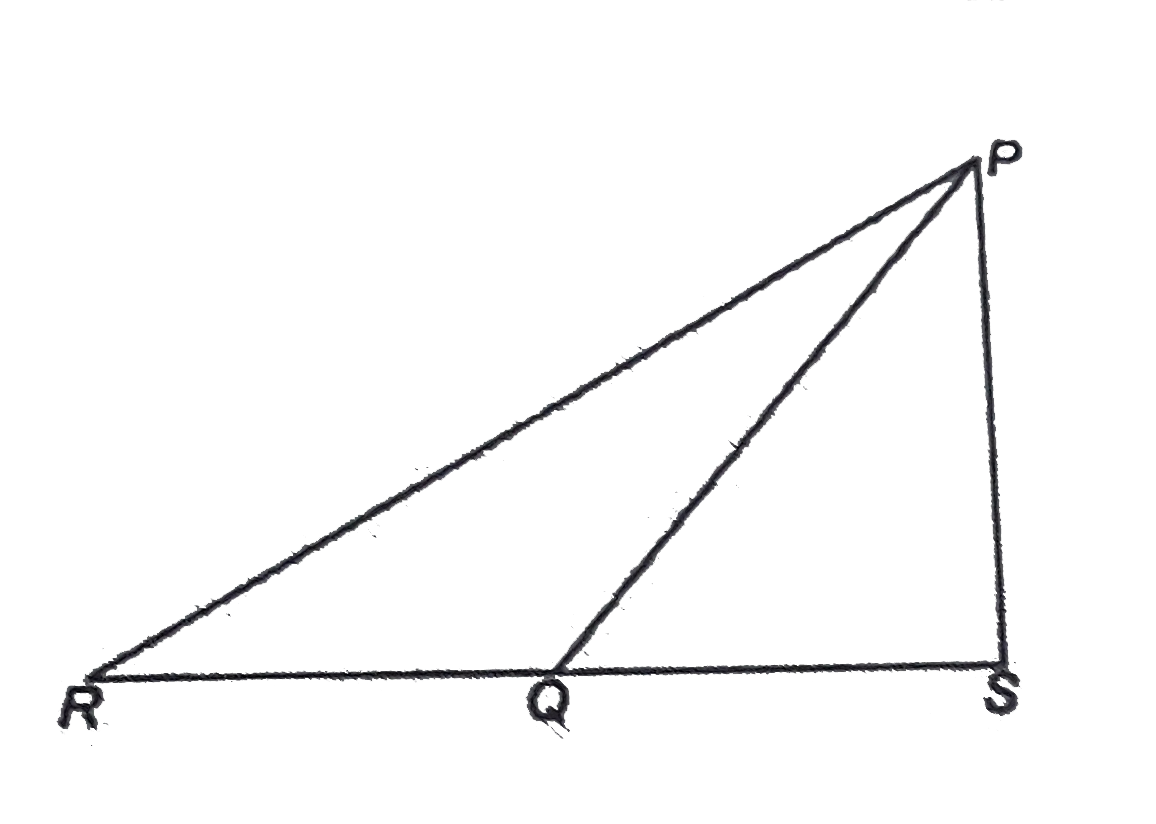Let ΔABC is an isosceles trianlge with AB=AC. If B=(0,a),C=(2a,0) and the equation of AB is 3x−4y+4a=0, then the equation of side AC is
y=8x−16a
3y=4x−8a
x=2a
y+8x=16a
The correct Answer is:C
To find the equation of side AC in the isosceles triangle ABC, we will follow these steps:
Step 1: Identify the coordinates of points B and C
Given:
- Point B = (0, a)
- Point C = (2a, 0)
Step 2: Set up the coordinates for point A
Since triangle ABC is isosceles with AB = AC, we can denote the coordinates of point A as (x, y).
Step 3: Write the equation of line AB
The equation of line AB is given as:
3x−4y+4a=0
Step 4: Use the distance formula to set up an equation
Since AB = AC, we can use the distance formula to express this equality:
AB=√(x−0)2+(y−a)2
AC=√(x−2a)2+(y−0)2
Step 5: Square both distances to eliminate the square root
Setting the two distances equal gives us:
(x−0)2+(y−a)2=(x−2a)2+(y−0)2
Step 6: Expand both sides
Expanding both sides:
x2+(y2−2ay+a2)=(x2−4ax+4a2+y2)
Step 7: Simplify the equation
Cancel x2 and y2 from both sides:
−2ay+a2=−4ax+4a2
Rearranging gives:
4ax−2ay−3a2=0
Step 8: Divide by a (assuming a ≠ 0)
4x−2y−3a=0
Step 9: Solve for y in terms of x
Rearranging gives:
2y=4x−3a⟹y=2x−3a2
Step 10: Find the slope of line AC
The slope of line AC can be determined using the coordinates of points A and C:
- Point C = (2a, 0)
- Point A = (x, y)
The slope m is given by:
m=y−0x−2a=2x−3a2x−2a
Step 11: Determine the equation of line AC
Since we know that point C lies on the line AC, we can substitute the coordinates of point C into the line equation derived from the slope.
Final Step: Write the equation of line AC
The equation of line AC can be expressed in the form:
x=2a
Thus, the equation of side AC is:
x=2a
Given:
- Point B = (0, a)
- Point C = (2a, 0)
Since triangle ABC is isosceles with AB = AC, we can denote the coordinates of point A as (x, y).
The equation of line AB is given as:
3x−4y+4a=0
Since AB = AC, we can use the distance formula to express this equality:
AB=√(x−0)2+(y−a)2
AC=√(x−2a)2+(y−0)2
Setting the two distances equal gives us:
(x−0)2+(y−a)2=(x−2a)2+(y−0)2
Expanding both sides:
x2+(y2−2ay+a2)=(x2−4ax+4a2+y2)
Cancel x2 and y2 from both sides:
−2ay+a2=−4ax+4a2
Rearranging gives:
4ax−2ay−3a2=0
4x−2y−3a=0
Rearranging gives:
2y=4x−3a⟹y=2x−3a2
The slope of line AC can be determined using the coordinates of points A and C:
- Point C = (2a, 0)
- Point A = (x, y)
m=y−0x−2a=2x−3a2x−2a
Since we know that point C lies on the line AC, we can substitute the coordinates of point C into the line equation derived from the slope.
The equation of line AC can be expressed in the form:
x=2a
x=2a
Topper's Solved these Questions
Similar Questions
Knowledge Check
- Question 1 - Select One
△ABC is an isosceles triangle with ∠C=90∘ and AC = 5 cm. Then, AB = ?
A2.5 cmB5 cmC10 cmD5√2cm - Question 2 - Select One
If ABC is an isosceles triangle with ∠C=90∘ and AC=5 cm, then AB is:
A5 cmB10 cmC5√2cmD2.5 cm - Question 3 - Select One
ΔABC is an isosceles triangle with AB=AC, side BA is produced to D such that AB=AD. Prove that ∠BCD is a right angle.
A60∘B90∘C120∘Dcan't be determined
ABC is an isosceles triangle with AC = BC. If AB2=2AC2, prove that ABC is a right triangle.
View Solution△ABC is an isosceles triangle with AC = BC. If AB2=2AC2 . Prove that △ABC is a right triangle.
 View Solution
View SolutionΔABC is an isosceles, with AB=AC. If P be any point on the side BC. Prove that AP<AB.
View SolutionΔABC is an isosceles triangle with AB=AC, side BA is produced to D such that AB=AD. Prove that ∠BCD is a right angle.
View SolutionABC is an isosceles triangle with AB = AC. Side BA is produced to D such that AB=AD. Find the ∠BCD:
View Solution

